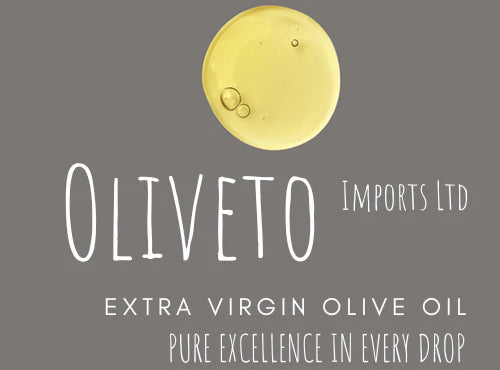The Polyphenol Trend in Olive Oil: Is More Always Better?
Share
Welcome to the latest buzzword in the world of olive oil: polyphenols. More specifically, high-polyphenol extra virgin olive oil — now a top pick among health-conscious consumers and gourmet food enthusiasts alike.
In the UK, food trends often catch on fast, driven by catchy headlines, influencer endorsements, and media soundbites. Much like political slogans, these messages gain traction through repetition, subtly reshaping consumer habits almost overnight.
And the latest darling? Olive oils boasting high polyphenol content. A growing number of EVOO enthusiasts or brand representatives now insist that unless an olive oil is packed with polyphenols, it’s simply not worth buying.
The Truth Behind the Hype
There is science to support the trend. Polyphenols — a type of phenolic compound found in olives — offer well-documented health benefits. They're powerful antioxidants and anti-inflammatory agents, and they play a central role in the oil’s sensory qualities: the bitterness, pungency, and peppery finish that signal freshness and quality.
But Can You Have Too Much of a Good Thing?
While polyphenols are unquestionably beneficial, more isn't always better — and science hasn’t confirmed that ultra-high levels offer extra health advantages.
Currently, there’s no solid evidence showing that olive oils with extremely high polyphenol content (above 800–1000 mg/kg) are more effective than those in the moderate-to-high range. Many nutrients and bioactive compounds follow what scientists call a U-shaped or J-shaped response curve:
Too little offers minimal benefit.
Moderate levels are optimal.
Too much may be ineffective — or, in some cases, counterproductive.
Just because an olive oil contains more polyphenols doesn’t mean your body can absorb or utilize them efficiently. Absorption depends on several factors:
The specific chemical structure of the polyphenols.
How they interact with other compounds in your diet.
Your individual metabolism and gut microbiome.
Beyond a certain threshold, excess polyphenols may simply be excreted or broken down into less active forms before they can deliver any health benefit.
So, What Counts as “High” Polyphenol?
In general:
Oils containing 250–500 mg/kg of polyphenols are considered moderately high.
Oils in the 500–800 mg/kg range are seen as high in polyphenols.
Anything above 800 mg/kg is ultra-high, and still relatively rare and niche in the market.
Quality Over Quantity
Our core message? Moderation is still essential. A well-made extra virgin olive oil with around 250–500 mg/kg of polyphenols is already capable of delivering most of the recognized health benefits — without overwhelming your palate or your wallet.
Chasing ultra-high numbers may not be necessary, especially if the oil becomes too bitter for everyday use or prohibitively expensive. Until more clinical research confirms added value at very high concentrations, there’s no proven benefit to going beyond what traditional diets, like the Mediterranean one, have relied on for centuries.
What Really Matters
Rather than focusing solely on polyphenol levels, consumers would do better to look at how their olive oil is produced. A truly high-quality EVOO comes from producers who:
Use modern, efficient extraction methods in a flawless clean environment.
Extract immediately after harvest to preserve freshness.
Cultivate healthy, organically treated olives.
Follow sustainable, environmentally responsible practices.
Prioritize quality at every stage — from grove to bottle.
Our Final Word
Polyphenols matter — but they’re just one part of the story. Instead of obsessing over numbers, look for fresh, well-balanced, ethically produced olive oils. Taste, traceability, and quality craftsmanship will always serve you better than a single metric on a label.
